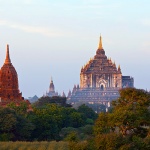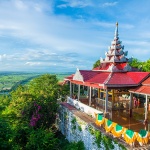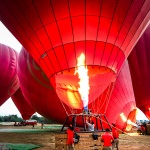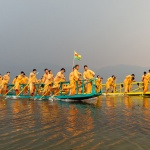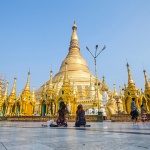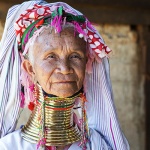By Amy Nair
While I was doing my research before visiting Myanmar, I learnt that the country consists of 135 different ethnic races. This tickled my curiosity and I was keen to know more about them. Hence, when I came to know about the National Races Village during my stay in Yangon, I did not think twice about heading there.
Located by the river, close to the Thanlyin Bridge, National Races Village is about a half hour’s drive from Yangon city centre. The village has been constructed by the Ministry of Border Affairs – formerly known as the Ministry of Progress of Border Areas, National Races and Development Affairs – and was inaugurated in 2002. It is open from 7 AM to 5.30 PM every day except during Myanmar’s national holidays.
Although Saturdays and Sundays are the busiest days, I decided to visit on a Sunday since traditional dances are performed on that day. The performance takes place at 2 PM in the Union Hall. I headed to the village after visiting the Sule Pagoda, taking a taxi that cost me 5,500 Kyats. The entrance fee to the village is 4,500 Kyats for foreigners. Locals pay 500 Kyats.
The village is a huge area that can be explored on a bicycle, electric bike, small bus or pony cart. I hired a bike for 500 Kyats an hour and set off on my journey. My leisurely trip around the village took me about 3 hours to complete.
Overall, the place is a mini representation of Myanmar. There are separate villages dedicated to the major ethnic groups – Bamar Village, Rakhine Village, Mon Village, Kayin Village, Chin Village. Kachin Village, Shan Village and Kayah Village.
You can see various landmarks of Myanmar such as Nan Myint Tower, Htokekhanthein, Kyaikhtiyo Pagoda, Taung Gwe Pagoda, Ngwe Taung Dam and Sekka Nyinaung Pagoda. There are replicas of the natural wonders of Myanmar as well, including Mount Zwegabin, Rih Lake, Mount Khakaborazi, Inle Lake, and Shin Upagotta Pavilion & Pond. Additionally, separate areas are dedicated to traditional aspects of Myanmar such as Golden Deer Handicraft Center and Orchid Garden.
Caption: Nan Myint Tower at the National Races Village. (this image will be purchased)
There’s so much to see that it can get a little overwhelming in the beginning. I picked up a guide map at the entrance to help me navigate my way through the village. Since it was almost 2 PM by the time I entered, I visited the Union Hall first to catch the traditional dance performance. The performance was colourful, lovely and very enjoyable. I then headed to the Nan Myint Tower to get a vantage view of the entire area. If you are a photography lover, you can take amazing pictures from this tower.
Next, it was time to visit the villages and learn about the traditional lifestyles of the people. Out of the 8 villages there, I managed to get a good look of 3 of them before heading back to the hotel.
Kachin Village
I began with the Kachin Village. Since the Kachin people live near the Himalayas, I was keen to find out how their lives were affected by the mountains. The village featured traditional Kachin houses constructed using bamboo, wood and thatch. The kitchens were equipped with firewood, household goods and other materials. There was space at the back of the houses for ceremonies to be held.
I learnt that if a Kachin house has a pole in the backyard, it means that the owner is the village elder who can hold the traditional Kachin Manaw Festival. The houses of the elders also featured a separate compartment for the spirits to live in.
Kayin Village
Next, I headed to the Kayin Village and noticed a massive bronze drum and a buffalo horn upon reaching. These are the musical instruments of the tribe. Each Kayin house had 4 rooms with an extension where betel nuts, fruits and paddy were placed to be dried. A separate room was reserved for the virgin lady of the house. The house also had Kayin traditional clothes on display.
Shan Village
My next stop was the Shan Village, which was a natural choice since Shan Hills was a part of my itinerary. Whenever you enter a Shan house, the first thing you will notice is a water pot kept for washing feet. Each house had two living areas – an outer one for unexpected guests and an inner one for invited guests. Interesting, isn’t it? The shelves in the rooms had traditional utensils on display.
Caption: The greenery inside National Races Village.
After visiting these villages, I checked out Inle Lake, Mount Zwegabin, Taung Gwe Pagoda, Ngwe Taung Dam and Rih Lake. I felt tired after that and headed back to Yangon.
Overall, it was a worthwhile 3 hours spent learning more about Myanmar and the life of the local people. If it weren’t such a hot day, I would have loved to stay back and explore more.

